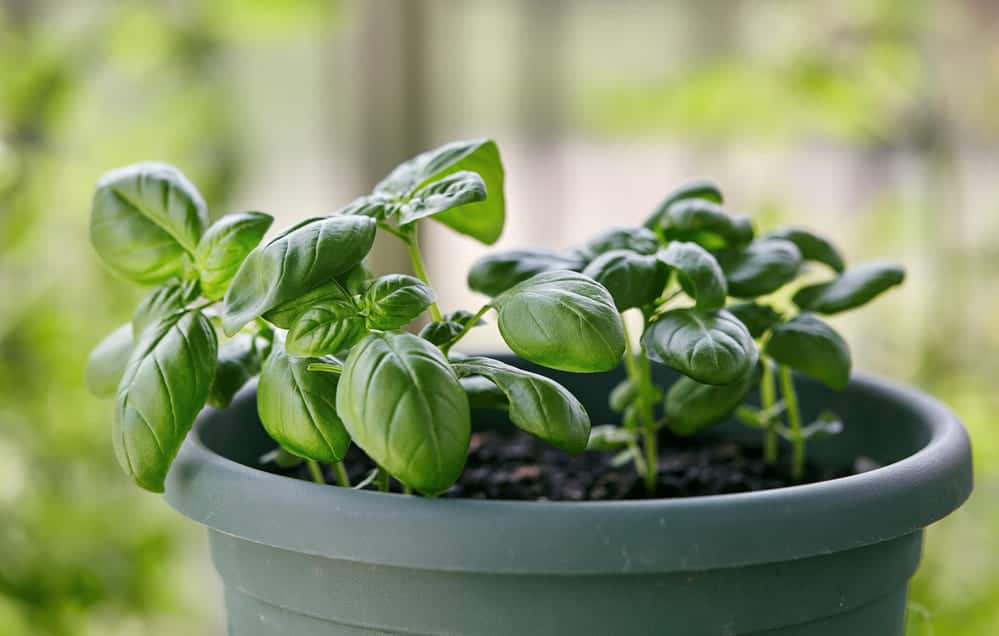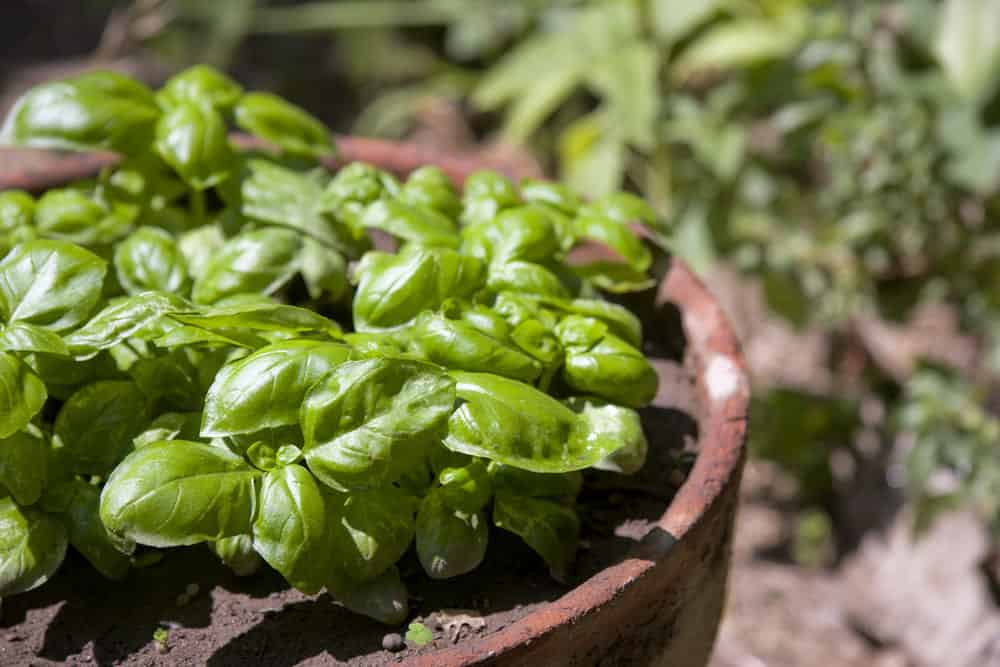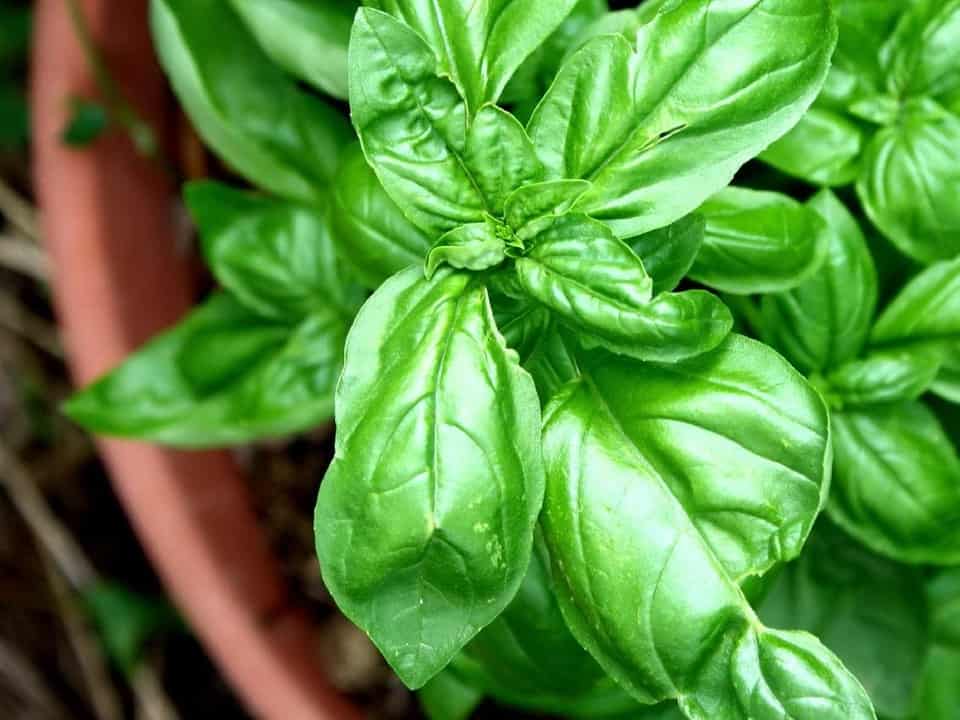Basil has been a well-known herb in both the kitchen and home gardens because who doesn’t love an excellent pesto dish or a tasty salad.
It is my favorite herb to grow in the garden because of how prolific its leaves are. It only needs minimum care if grown in the right conditions.
Basil requires a moderate amount of sunlight, about 4-6 hours per day, to grow well. The best time for basil to receive sunlight is in the morning or early afternoon, as excessive heat from the hot afternoon sun can cause damage to the leaves.
Proper sunlight and well-draining soil that is kept moist, not soaked or dry, enable it to reach maximum growth potential.
If you grow them from seeds, it is best to harden these aromatic herbs to full sun as soon as the seedling has 4 leaves.
Now, read about some of the frequently asked questions on basil and its sunlight requirements for their corresponding responses.
More: How Long Do Basil Plant Live?
Does basil need direct sunlight?
Essentially, basil plants grow well in the warmth of direct sunlight.
Suffice it to say that they love soaking in the sun.
In fact, its origin was traced back to the culinary traditions from Africa and Southeast Asia for over 4,000 years ago. We know that these two regions have a similar climate of warm weather and sunny days.
However, the most appropriate answer to this still depends on the characteristics of the weather temperature where you live.
You may want to apply precaution if you reside in areas with drier climates. Meaning, you need to keep your basil shaded during the hours of the day when the sun is highest in the sky to prevent sunburnt.
An indication that your basil plant suffers from too much sun exposure is the browning of the leaf edges. Remove these scorched leaves when you spot them to prevent plant stress.
More: How Often to Water Basil Plant
Can basil get too much sun?

Plentiful sunlight gives your plants an advantage because it keeps them sturdy, healthy and catches fewer diseases.
Let us quickly explain and revisit our grade school science class to understand why they need full sun to support their growth rate.
It has something to do with their food-making process, also known as photosynthesis. In this process, your basil plant uses water, carbon dioxide, and sunlight like most plants.
The energy that comes from the sun breaks down the carbon dioxide and water. The results of this process are sugar and oxygen. Oxygen is then released by your basil plant into our environment.
Photosynthesis is the main reason why it needs that much sunlight to grow fast and healthy. So, it needs more sunlight to make its food and exhale oxygen to the atmosphere.
However, if you notice your basil plant shows signs of stress or droopy leaves while being exposed to full sun, there are a few indications of this.
First, you must check the soil. For optimum growth, you must keep it moist but well-draining. The leaves might look limp in the heat of the sun because it is thirsty, or the plant may be sitting on waterlogged soil, contributing to root rot.
Watering your thirsty basil can alleviate the signs of stress, and it should be back to its healthy-looking old self. Consider changing the soil if it doesn’t drain appropriately to avoid root rot.
During the summer months, I would give my basil plants extra dowsing of water to get them through the hottest hours of the day, and they thrive just fine. They even withstood a scorching temperature of 100 F this summer since they were acclimated when they sprouted.
Does basil like the sun or shade?
Ideally, it is best to keep them under 6 to 8 hours of full sunlight. As they say, more light is better.
Basil plants perform better when given warmth and shelter. Thus, too much wind can dehydrate their leaves.
They can thrive in partial shade, too. However, based on experience, pests were more drawn when I kept my basil plants under the shade.
I had to deal with aphids infestation that went out of control until my basil succumbs to its death. Now, it is continuously exposed to full sun, and it flourishes well. The best part? It can provide me with savory leaves that go really well with my morning omelet.
Also, if you are in a place that boasts of the hottest climate and dry air during the summer period, it is best advised to keep them shaded during the hottest time of the day, which is 12 noon to 3 in the afternoon.
They can grow well in partial shade in these special cases. However, they need good protection from the harsh intensity of the sun in this climate.
Will basil grow indoors?
If there is no option to grow basil plants outdoors and you consider growing them indoors, the same conditions for the environment apply.
They must be situated in an area that receives 6-8 hours of sunlight and needs fresh air. They may not grow as quickly if they are planted outdoors.
Many factors can affect this slower growth rate when you keep them indoors. It can be the indoor air quality, which may vary from the fresh air available outdoors. Other factors that may affect the growth rate can also be the size of the container, the composition, and soil quality.
Does basil like morning or afternoon sun?
Basil plants rejoice in full sunlight and morning sun.
In hotter climates, you can keep them shaded in the afternoon to protect their leaves from scorching because of intense daylight.
Another gardening tip that can prevent their leaves from scorching is to give them lots of water during a hot summer day. Overwatering is not a problem if the soil has good drainage because water just passes through, and only enough moisture is retained in the soil.
If the temperature rises above 86 F over the next few days, take them to partial shade between 12 noon and 3 pm.
Where is the best place to put a basil plant?
The best place for basil is soil with good drainage and a spot with good sun exposure. So, whether you are growing them on garden beds or containers, well-draining soil is a must.
It is a plant that requires a warm temperature of about 50 F. It does not like to be exposed to cold weather. If the temperature dips below 39 F, the basil will meet its untimely death.
Wait until the dangers of the last frost have passed before planting the seeds outdoors since basil is very sensitive to cold. Even a very light frost can kill it.
Where does basil grow in the United States?
Basil plants are tropical native and sun-loving. However, they can be propagated in plant hardiness zones 7 to 10 of the U.S. Department of Agriculture.
They will die at the first frost of the season, but if you would like to keep this annual alive for the rest of the year, you can plant it in a pot indoors in the brightest and warmest place that you have.
Some of my friends use grow lights indoors, and even hydroponic systems for their basil plants, and they can enjoy their fresh, spicy scented basil leaves for their culinary dishes in winter.
Conclusively, basil loves warmth and full sunlight for maximum growth. They also require well-draining soil that is also moist. They have a low tolerance for colder temperatures.
Their flavorful, aromatic leaves are a great addition to salads, tomato-based sauces, and sauteed dishes, which is why they are a favorite herb grown in home gardens. Enjoy planting and harvesting your basil leaves.


